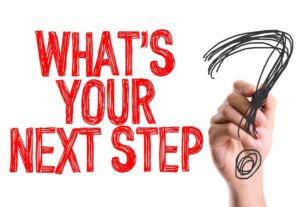Industry trends show that ERP systems typically have a 10-year life cycle. First and foremost, this life cycle is based on changes and advances in technology and secondly, changes and growth strategies within your company.
When looking for a new system, you need to be certain the system will be able to handle a given set of requirements you need today, just at a minimum. As hard as it is, people also buy based on functional requirements they think they need later. As for the mid-market, most systems will offer the capability to scale up and grow their system with added features and modules, or outside add-on systems or modules. These systems are flexible and are built to accommodate expansion. For the lower market, systems are built with templates and offer less flexibility. The lower market solutions are more “turnkey” and built to handle minimal requirements for a lower cost. This turnkey approach can get small businesses up and running quickly, but they are not necessarily built to scale and support the larger companies. For the purpose of this conversation, we are talking about people who may have more complexities and are looking to scale up, maybe again, from their current mid-market solution.
So, the question is, if the system I have today isn’t broken, why should I be looking around for new options?
To speak to my first point on technology trends, just within the last 10-15 years, we have seen
yet another technology breakthrough with the cloud. Finally, we have reached a point where there is more of a general understanding of what the “cloud” is, and with the advances in security, companies are feeling more comfortable with that type of deployment model. Another recent breakthrough is a system not just hosted or as a SaaS, but that is web-native, offering you the benefits of a hosted or cloud system without needing a VPN for access. Meaning, you can access anywhere, faster and on any device. With a Web-based platform, you have more flexibility and deployment options. They support mobile, cloud and private cloud as well as on-premises access to applications, with one single code or edition of the software. You can also pick the pricing model you prefer.
So, although you are hearing about these advances in technology and new systems, you are still not sure it’s time to start looking. The questions you really need to be asking yourself that will help your decision are:
- Is the total solution I have today causing inefficiencies because it contains multiple systems? Are you working in multiple databases?
- Are people wasting time trying to effectively communicate or find information they need?
- Are people struggling to get their job done due to delayed or a lack of information when they need it?
- And finally, is all this costing me money to sustain?
Now, to my second point about trends, there will be changes in your business strategy and growth projections. I believe that addressing those changes is based on your business strategy and is also a matter of your comfort level. Since your system is not necessarily broken, and you’re not in an emergency, you have time to plan, evaluate and budget. Take this as an opportunity to evaluate your company’s business plan, incorporate “sustainability” into your conversation, and assess how a new ERP system will fit into place.
Some other good questions to ask:
- Are you looking to stay at the same company revenue, employee and transaction size and model you are today, and five to 10 years from now?
- Are you comfortable managing disparate systems, and is my current solution sustainable?
- If you are someone who values technology, then it makes a lot of sense to ask yourself, will my current system’s technology support my ability to scale and grow? And, will it keep me competitive in my marketplace?
If you are working with a Value-Added Reseller (VAR) that you trust, I suggest an optimization assessment or System Design engagement to help you answer these questions. This way, the two of you can determine how to best optimize your current system, look into where your gaps are, and determine if a new system really makes sense. This is all based, of course, on your growth projections, time and budget. The VAR (who you hopefully consider your business partner) can help you plan and budget for what is best for your company. Having an analysis gives you the information to make these decisions, and plan for the long term.
By doing an assessment, you will:
- Develop a view of your organization’s operational workflow, including its interactions with your company systems and processes.
- Identify the strengths and weaknesses of your systematic and workflow methodology.
- Increase the efficiency of delivering quality products to the market.
- Provide a comprehensive systems requirements document with which to evaluate replacement and enhancements to all or part of its current operational systems.
- Enable accurate gap analysis to take place between any proposed system and your organizational needs.
At SWK, our job is to sell the right kind of software at the right time in your business lifecycle. Then, our job is to be a business partner that helps you grow and sustain your practice. We do this with a team that knows how to ask the tough questions, and can help you prepare for the future. We understand the challenges that come with system complexity, and the variety of current systems and processes you may have. An optimization assessment can help you whether you are consolidating or replacing your ERP or business management system. Feel free to contact us if you have any questions.

